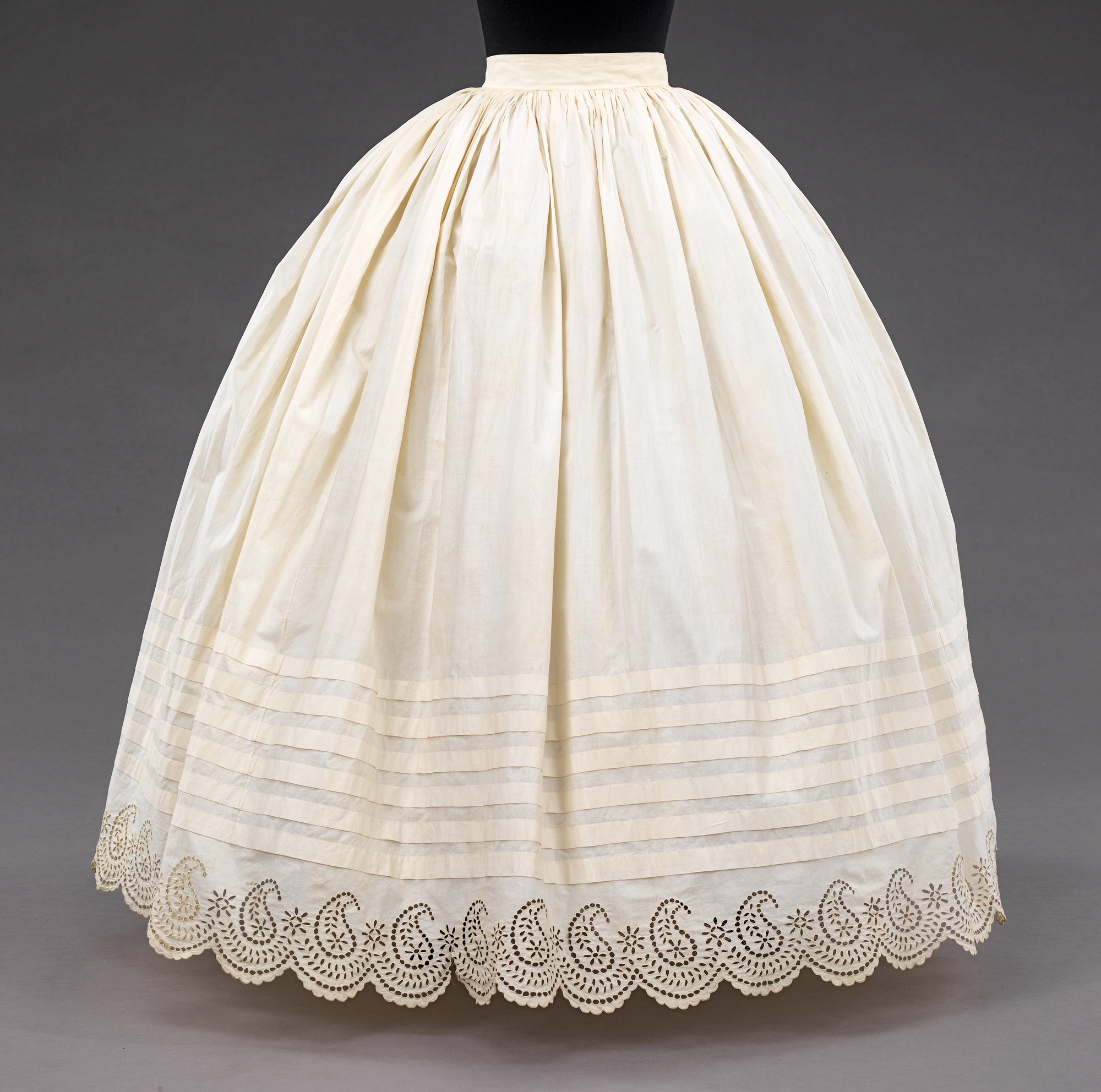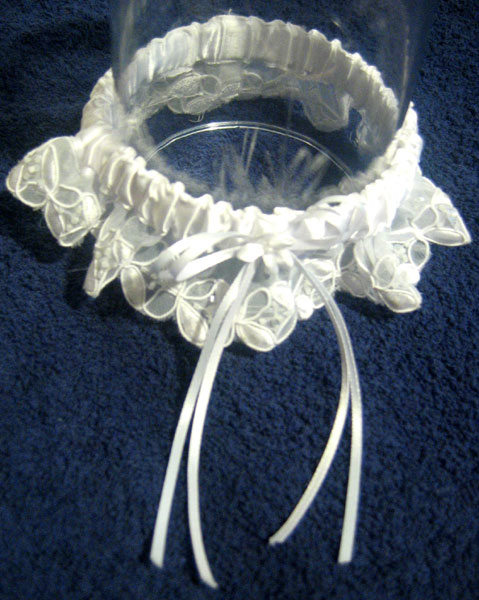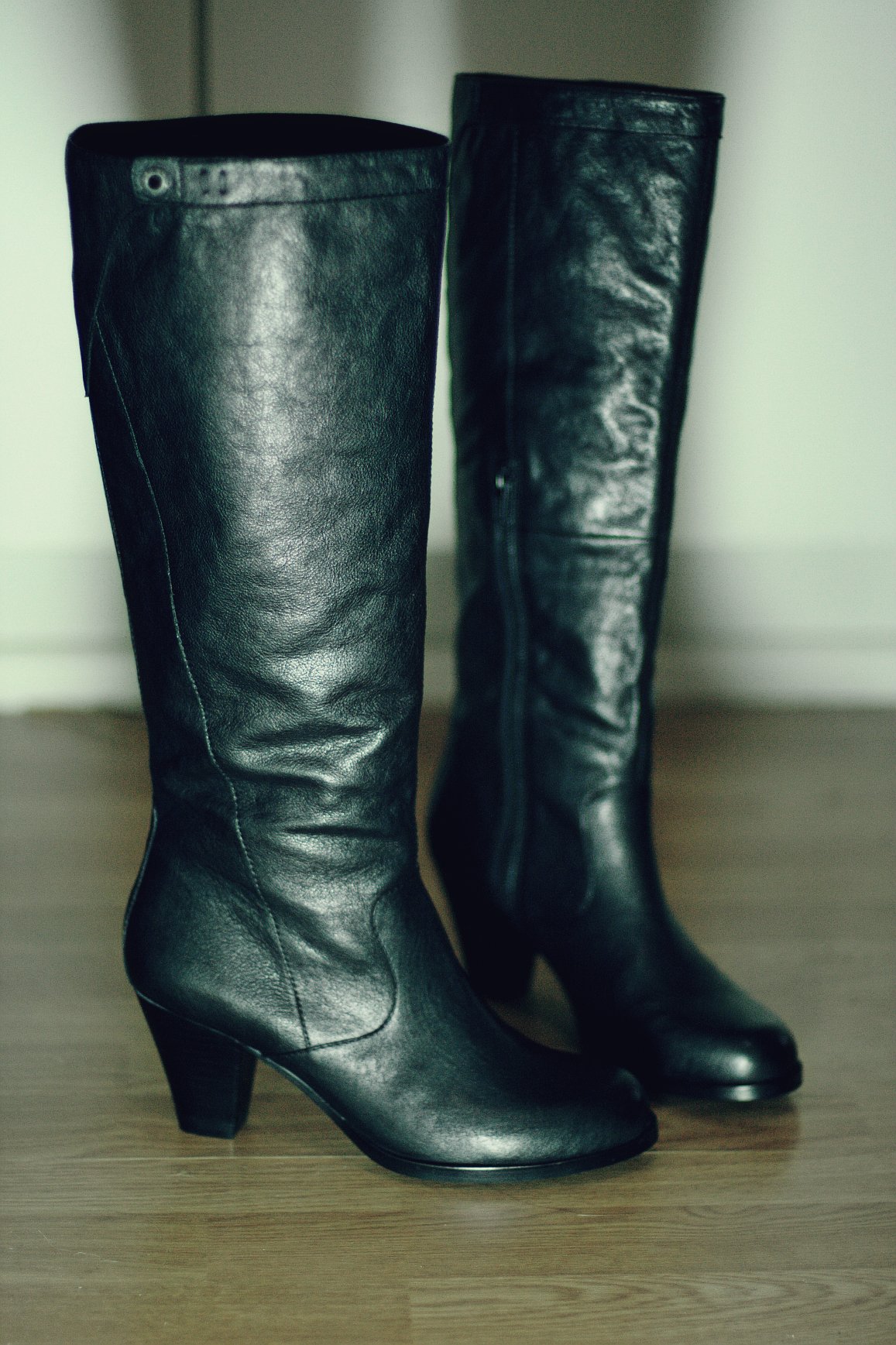|
Can-can Dress
''Can-Can dresses'' were historically worn during the can-can dance. Whilst the actual items of clothing can vary, but the general style of clothing remains the same. The main idea is that the dresses should be full of frills and ruffles and be multilayered. In one interpretation, designed for a play that was set in the 1890s, the cancan dresses were "in different colours with lots of ruffles and frills on their petticoats and pantalette style underwear... fishnet stockings with ruffled garters". The cancan outfit can also be adorned with some or all of the following accessories: ankle boots, hats, gloves, capes, shawls, wraps, boas, jewelry and feathers. Traditionally, women commonly wore split knickers in their outfit. In ''Celebrities' Most Wanted'', a dress "not unlike a can-can dancer's dress" was described as "short and bustled in the front, flowing into a long bustled train of messy black and white fabric in the back" Contemporary versions of the cancan dress have a ... [...More Info...] [...Related Items...] OR: [Wikipedia] [Google] [Baidu] |
Frill (fashion)
Ruffle or ruffles may refer to: * Ruffle (sewing), a gathered or pleated strip of fabric *Ruffle (software), a Flash Player emulator written in the Rust programming language *Ruffles (potato chips), a brand of potato chips *Ruffles and flourishes, a fanfare for ceremonial music played on drums and bugles *Ruffle Bar, an island in the US state of New York *Raspberry Ruffle, a UK chocolate bar manufactured by Tangerine Confectionery *Jonathan Ruffle Jonathan Ruffle is a British writer, director and producer who has made TV and radio programmes for the BBC, ITV and Channel 4. At one time Steve Wright's and Simon Bates’s radio producer on BBC Radio 1, he left to produce the acclaimed BBC ..., a British writer See also * Ruff (other) {{disambiguation ... [...More Info...] [...Related Items...] OR: [Wikipedia] [Google] [Baidu] |
Ruffle (sewing)
In sewing and dressmaking, a ruffle, frill, or furbelow is a strip of fabric, lace or ribbon tightly gathered or pleated on one edge and applied to a garment, bedding, or other textile as a form of trimming. Ruffles can be made from a single layer of fabric (which may need a hem) or a doubled layer. Plain ruffles are usually cut on the straight grain. Ruffles may be gathered by using a gathering stitch, or by passing the fabric through a mechanical ruffler, which is an attachment available for some sewing machines. A flounce is a particular type of fabric manipulation that creates a similar look but with less bulk. The term derives from earlier terms of ''frounce'' or ''fronce''. A wavy effect is achieved without gathers or pleats by cutting a curved (or even circular) strip of fabric and applying the inner or shorter edge to the garment. The depth of the curve as well as the width of the fabric determines the depth of the flounce. A godet is a circle wedge that can be ins ... [...More Info...] [...Related Items...] OR: [Wikipedia] [Google] [Baidu] |
Petticoat
A petticoat or underskirt is an article of clothing, a type of undergarment worn under a skirt or a dress. Its precise meaning varies over centuries and between countries. According to the ''Oxford English Dictionary'', in current British English, a petticoat is "a light loose undergarment ... hanging from the shoulders or waist". In modern American usage, "petticoat" refers only to a garment hanging from the waist. They are most often made of cotton, silk or tulle. Without petticoats, skirts of the 1850s would not have the volume they were known for. In historical contexts (16th to mid-19th centuries), ''petticoat'' refers to any separate skirt worn with a gown, bedgown, bodice or jacket; these petticoats are not, strictly speaking, underwear, as they were made to be seen. In both historical and modern contexts, ''petticoat'' refers to skirt-like undergarments worn for warmth or to give the skirt or dress the desired attractive shape. Terminology Sometimes a petticoat may be ... [...More Info...] [...Related Items...] OR: [Wikipedia] [Google] [Baidu] |
Pantalettes
Pantalettes are undergarments covering the legs worn by women, girls, and very young boys (before they were breeched) in the early- to mid-19th century. Pantalettes originated in France in the early 19th century, and quickly spread to Britain and America. Pantalettes were similar to leggings. They could be one-piece or two separate garments, one for each leg, attached at the waist with buttons or laces. The crotch was left open for hygiene reasons. They were most often of white linen fabric and could be decorated with tucks, lace, cutwork or broderie anglaise. Ankle-length pantalettes for women were worn under the crinoline and hoop skirt to ensure that the legs were modestly covered should they become exposed. Pantalettes for children and young girls were mid-calf to ankle-length and were intended to show under their shorter skirts. Until the mid-19th century, very young boys were commonly dressed in dresses, gowns and pantalettes, though these were commonly associated with ... [...More Info...] [...Related Items...] OR: [Wikipedia] [Google] [Baidu] |
Fishnet
In the field of textiles, fishnet is hosiery with an open, diamond-shaped knit; it is most often used as a material for stockings, tights, gloves or bodystockings. Fishnet is available in a multitude of colors, although it is most often sported in traditional matte black. Fishnet is commonly worn on the legs and arms by practitioners of goth and punk fashion, but is also commonly worn by the mainstream as a fashion statement. Generally considered to be a sexy garment, it may serve as a component of sexual fetishism. Fishnets are used mostly as a type of undergarment, and in as much as it defines curves by applying a grid close to the body it generally accentuates the wearer's muscular definition. A more practical use of fishnet textiles is in high performance next-to-skin apparel used in cold weather outdoor sports, including hiking, hunting, fishing, skiing, and mountaineering. In this context, fishnet is usually knitted from fibers of polypropylene, merino wool, or nylon, and ... [...More Info...] [...Related Items...] OR: [Wikipedia] [Google] [Baidu] |
Garter (stockings)
A garter is an article of clothing comprising a narrow band of fabric fastened about the leg to keep up stockings. In the eighteenth to twentieth centuries, they were tied just below the knee, where the leg is most slender, to keep the stocking from slipping. The advent of elastic has made them less necessary from this functional standpoint, although they are still often worn for fashion. Garters have been widely worn by men and women, depending on fashion trends. Garters in fashion In Elizabethan fashions, men wore garters with their hose, and colourful garters were an object of display. In Shakespeare's ''Twelfth Night'', "cross braced" garters (a long garter tied above and below the knee and crossed between), as worn by the character Malvolio, are an object of some derision. In male fashion for much of the 20th century a type of garter for holding up socks was used as a part of male dress; it is considered somewhat archaic now. Use in wedding traditions There is a Weste ... [...More Info...] [...Related Items...] OR: [Wikipedia] [Google] [Baidu] |
Fashion Boot
A fashion boot is a boot worn for reasons of style or fashion (rather than for utilitarian purposes – e.g. not hiking boots, riding boots, rain boots, etc.). The term is usually applied to women's boots. Fashion boots come in a wide variety of styles, from ankle to thigh-length, and are used for casual, formal, and business attire. Although boots were a popular style of women's footwear in the 19th century, they were not recognized as a high fashion item until the 1960s. They became widely popular in the 1970s and have remained a staple of women's winter wardrobes since then. History Pre-1960s In the 19th and early 20th centuries, ankle and calf-length boots were common footwear for women. Rising hemlines made longer styles of boots popular. In 1913, Denise Poiret, the wife of celebrated French couturier Paul Poiret, caused a sensation in Paris and New York by wearing knee-length boots in wrinkled Morocco leather. Designed by her husband, made by the bottier Favereau, and s ... [...More Info...] [...Related Items...] OR: [Wikipedia] [Google] [Baidu] |
Cape
A cape is a clothing accessory or a sleeveless outer garment which drapes the wearer's back, arms, and chest, and connects at the neck. History Capes were common in medieval Europe, especially when combined with a hood in the chaperon. They have had periodic returns to fashion - for example, in nineteenth-century Europe. Roman Catholic clergy wear a type of cape known as a ferraiolo, which is worn for formal events outside a ritualistic context. The cope is a liturgical vestment in the form of a cape. Capes are often highly decorated with elaborate embroidery. Capes remain in regular use as rainwear in various military units and police forces, in France for example. A gas cape was a voluminous military garment designed to give rain protection to someone wearing the bulky gas masks used in twentieth-century wars. Rich noblemen and elite warriors of the Aztec Empire would wear a tilmàtli; a Mesoamerican cloak/cape used as a symbol of their upper status. Cloth and clothing w ... [...More Info...] [...Related Items...] OR: [Wikipedia] [Google] [Baidu] |
Shawl
A shawl (from fa, شال ''shāl'',) is a simple item of clothing from Kashmir, loosely worn over the shoulders, upper body and arms, and sometimes also over the head. It is usually a rectangular or square piece of cloth, which is often folded to make a triangle, but can also be triangular in shape. Other shapes include oblong shawls. History The words "shawl" and "pashmina" come from Kashmir, the northern region of the Indian subcontinent. Sources report cashmere crafts were introduced by Sayeed Ali Hamadani who was an Iranian scholar when he came to Kashmir in the 14th century. He found that the Ladakhi Kashmiri goats produced soft wool. He took some of this goat wool and made socks which he gave as a gift to the king of Kashmir, Sultan Qutbuddin. Afterwards, Hamadani suggested to the king that they start a shawl weaving industry in Kashmir using this wool. That is how pashmina shawls began. The United Nations agency UNESCO reported in 2014 that Ali Hamadani was one of the ... [...More Info...] [...Related Items...] OR: [Wikipedia] [Google] [Baidu] |
Feather Boa
A boa is a fashion accessory that is usually worn wrapped around the neck like a scarf. Feather boas are most common, although modern boas are most often made with synthetic feathers. Construction A boa can be made of fur, but it is usually made instead from various types of feathers. Ostrich, marabou stork, and turkey are the most common feathers used, although non-feather boas are also available. The feathers go through bleaching or dyeing processes and are glued and stitched into lengths called "ply". Sometimes more natural boas are produced. A lightweight chandelle boa might only weigh , whereas a 24 ply ostrich boa can weigh as much as . The more ply, the fluffier and thicker the boa. Boas are generally measured by weight (grams), length (centimetres), and ply. Boas are available through novelty, costume, or lingerie shops, as well as online. With the development of "fun fur" or "eyelash" yarns in the late 20th century, an adept craftsperson can knit a boa of one solid c ... [...More Info...] [...Related Items...] OR: [Wikipedia] [Google] [Baidu] |
French Knickers
French knickers (also called tap pants in the United States) are a type of women's underwear or lingerie. The term is predominantly used in the United Kingdom (UK) and Australia to describe a style of underpant that is similar in look to a pair of shorts. French knickers are worn from the hip, concealing some of the upper thigh and all of the buttocks. The garment features an "open leg" style (a loose fitting leg opening without elastic cuffs) that allows for a more comfortable fit and the straight-cut leg cuffs can be designed with or without trimming. The fabric is often bias cut. French knickers are not to be confused with other underpants styles such as hipsters, briefs, bikini bottoms and boyshorts, all of which feature elasticated leg openings and fit snug to the body. French knickers are ideally accompanied by full, flared and A-Line skirts, trousers and dresses, as they can add bulk and produce a visible panty line (VPL). The item is an elegant and comfortable alter ... [...More Info...] [...Related Items...] OR: [Wikipedia] [Google] [Baidu] |








